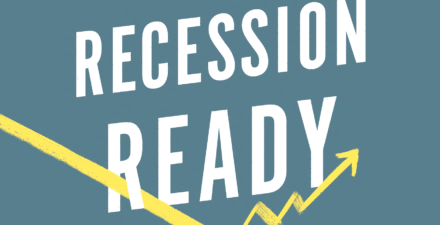Brad DeLong: Worthy reads on equitable growth, May 24–30, 2019
Worthy reads from Equitable Growth:
- An excellent conversation with Janet Currie on how, in the United States today, choosing the right parents does a lot to determine your life chances. But it does not have to be that way. Read “In Conversation with Janet Currie,” in which she observes: “It is hard to talk about prenatal influences without sounding deterministic, but outcomes aren’t deterministic at all. One way that you can see that is that the same negative shock, such as a given level of air pollution, will typically have a much greater effect on a poor infant than on a richer infant. What that observation tells you is that there is something that can be done to mitigate the effects of a harmful shock, and the richer parents are doing it, whatever it is. If you could find that and put it in a bottle, or put it in a program, then you would be able to mitigate the effects of these early-childhood insults. And in fact, we have had reasonable success in mitigating the effects of some types of prenatal disadvantage through public programs. There is a great deal of evidence, some to which I have contributed, on the positive effects of the Supplemental Nutrition Program for Women, Infants, and Children during pregnancy on infant health outcomes. These positive effects are striking, given that the dollar value of WIC benefits is fairly small. It may well be that modest amounts of money combined with improved access to medical care and some psychosocial support can go a long way toward improving the health of mothers and their babies.”
- Kate Bahn tweets that she is “Looking forward to the day when economists stop interpreting constraints as preferences. E.g. women just choose to earn less at jobs that give them flexibility to do all of the caregiving and unpaid household work in their families!”
Worthy reads not from Equitable Growth:
- It has been known since the late 1990s by those who cared to think about it—and the Federal Reserve certainly ought to have cared to do so—that it was worth substantial compromises with respect to other goals in order to make sure that your policy excursions to the zero lower bound were rare and short. This should have been happening two decades ago. Indeed, I thought this was happening two decades ago. Read Joseph E. Gagnon and Christopher G. Collins, “Changes Are Coming to the Fed’s Monetary Policy Strategy,” in which they write: “The most likely outcome of the review is that the Fed will commit itself to intentionally overshooting its inflation target after episodes at the zero bound in which it has undershot the target.”
- There’s a 2.5 percent reduction in suicides with a 10 percent rise in two dimensions of the safety net. That seems, to me, to be large effect. Read William H. Dow, Anna Godøy, Christopher A. Lowenstein, and Michael Reich, “Can Economic Policies Reduce Deaths of Despair?,” in which they write: “Midlife mortality has risen … largely reflect[ing] increased mortality from alcohol poisoning, drug overdose, and suicide … We leverage state variation in policies over time to estimate difference-in-differences models of drug overdose deaths and suicides, using data on cause-specific mortality rates from 1999—2015 … Higher minimum wages and the Earned Income Tax Credit significantly reduce nondrug suicides … Increasing both the minimum wage and the EITC by 10 percent would likely prevent a combined total of around 1,230 suicides each year.”
- I confess that I am a profound skeptic about deep negative nominal interest rates. A slightly higher inflation target and policies to fight the asset price configuration called “secular stagnation” would largely obviate the need and leave behind a problem easily and straightforwardly dealt with via expansionary fiscal policy. And we really do not know how such an institutional reconfiguration would actually work. Confronted with a choice between known and understood policies that would work, and new ones with unknown side effects and effects that might, I do not understand the enthusiasm for the second. Read Ruchir Agarwal and Miles Kimball, “Enabling Deep Negative Rates to Fight Recessions: A Guide,” in which they write: “We (i) survey approaches to enable deep negative rates … (ii) establish … enabling negative rates while remaining at a minimum distance from the current paper currency policy and minimizing the political costs; (iii) discuss why standard transmission mechanisms … are likely to remain unchanged in deep negative rate territory; and (iv) present communication tools that central banks can use.”







